|
 Secure Site
Secure Site
|
 |
Archive for the 'Zen Timers' Category
 how to design a sacred space Create a personal meditation space that inspires your practice and invokes your higher self.
If you’re a gardener, you know the value of choosing an ideal site and preparing quality soil for nurturing healthy plants. The same is true for tending to your inner growth: when you devote a nook in your home to your practice and sow it with your higher intentions, you create the right conditions for your spiritual life to thrive.
A dedicated space collects and focuses your energy, removes uncertainty about where to practice, and, through habit and association, helps the mind move inward more quickly and deeply. Much like an encounter with the refrigerator conjures thoughts of food, and a glance at the couch invites a comfortable sprawl, catching sight of your meditation seat in a sanctified space will evoke your deepest yearnings and inspire you to do your practice.
Choose a place that can become a sanctuary—a quiet, private space protected from outside distractions and out of public view. You may be fortunate enough to designate an entire room, but a corner in your bedroom will suffice.
You’ll need a meditation seat—traditionally known as your asana—which may be a neatly folded blanket topped by a cushion for support, or even a chair or bench. Keep any additional props needed to support a comfortable sitting posture nearby, as well as your mala, shawl, or journal; but otherwise keep the space uncluttered and scrupulously clean.
A simple altar will serve as the heart of your space, calling you to your practice by providing inspiration and focus. An altar is an acknowledgement of the deeper essence of life and a bridge to the unseen—a link between our life in the world of elements and the subtle world. All altars, even public ones, serve to remind us of meaning and purpose in life, and connect us to inner strength and guidance. In religious or ritual settings, an altar is the locus for offerings made to ancestors or deities. In the context of yoga meditation, an altar inspires an offering of inner resources rather than outward ceremony or ritual, so simplicity is key.
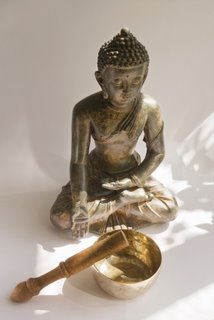 Carved Wooden Thai Buddha with Singing Bowl Try a small low table or a small chest of drawers at eye level, with a tasteful and simple covering. The objects you place upon your altar give focus, substance, and energy to your highest intentions. Traditionally, a flame (from a candle or a ghee lamp), water, flowers, fruit, and incense are offered on an altar to represent the gifts of the world given to us through the five elements. Often, these are joined by objects from a pilgrimage—a stone, sanctified water, or a sacred representation (such as a picture of Our Lady of Guadalupe or a carving of Lord Ganesha). The objects themselves are not as important as whether the altar uplifts the mind and touches the heart.
By creating a sacred space that encourages you to cultivate and nurture a devoted practice, you are one step closer to tasting the fruits of yoga—unconditional well-being and pure awareness.
adapted from Yoga International by, Sandra Anderson / co-author of Yoga: Mastering the Basics and has taught yoga and meditation for over 25 years.
Use our unique “Zen Clock” which functions as a Yoga & Meditation Timer. It features a long-resonating acoustic chime that brings your meditation or yoga session to a gradual close, preserving the environment of stillness while also acting as an effective time signal. Our Yoga Timer & Clock can be programmed to chime at the end of the meditation or yoga session or periodically throughout the session as a kind of sonic yantra. The beauty and functionality of the Zen Clock/Timer makes it a meditation tool that can actually help you “make time” for meditation in your life. Bring yourself back to balance.
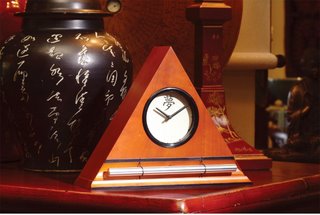 zen alarm clocks and chimes for a gentle awakening Now & Zen – The Zen Meditation Timer Store
1638 Pearl Street
Boulder, CO 80302
(800) 779-6383
Posted in Chime Alarm Clocks, Well-being, Zen Timers
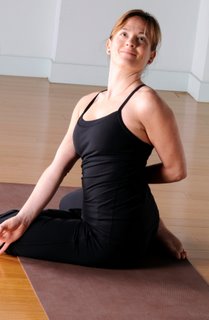 yoga There is one yogic breathing technique that can be practiced at all times of the day and night by just about anyone. This pranayama (breath control) is called ujjayi.
Ujjayi means “victorious.” The prefix ud means upward and superior, and jaya (from root ji) means to conquer and have victory over. With consistent practice of ujjayi breath, a practitioner will attain victorious results for both body and mind.
The benefits of ujjayi breath are manifold. In addition to aerating the lungs and removing excess phlegm, it boosts endurance and gently warms the body. This soothing breath massages and tones the entire nervous system, making it an excellent way to combat stress. It’s also believed to help counter high blood pressure.
While one should initially learn ujjayi breath in a seated position, in can later be consistently threaded through the entire asana practice.
Here’s how to practice:
1. Sit in a comfortable, upright meditation position (I encourage sitting on a folded blanket or pillow for extra support)
2. Maintaining a tall spine, close eyes and begin to breath normally through both nostrils. Observe the flow of the air in and out of the body.
3. Once you’re familiar with the course of the breath, take a deep, slow breath in through the nostrils. Try to focus the air in on the palate and back of the throat and create a sibilant sound (saaaa). It should be an ocean like sound, or like having your ear against a conch shell. Fill the lungs entirely and then…
4. Breath out slowly, focusing the air on the back of the throat/palate.
The sea-like sound is caused by a subtle constriction of the glottis, which is the aperture of the larynx.
The breath should be just loud enough that someone sitting close to you would hear it. Avoid being too loud of forceful. I’m fond of esteemed Ashtanga teacher Tim Miller’s description of ujjayi, “Imagine sipping the breath in through a straw. If the suction is too strong the straw collapses and great force is required to suck anything through it.”
5. Set your Zen Timer with Tibetan Bowl for 15 minutes. Continue to breathe for 5 to 15 minutes with this ocean like sound. If possible, take a brief savasana after.
More experienced practitioners, commit to carrying ujjayi breath through your entire asana practice. Let it be metronomic in quality.
Observe how much space you’ll discover in body and mind!
Sophie Herbert is an alignment focused yoga teacher (and perpetual student), a singer-songwriter, and a visual artist. She has lived, studied, and volunteered extensively in India; teaches yoga in Brooklyn and Manhattan; and recently released her first full-length album, “Take a Clear Look.” Please visit her website at SophieHerbert.com.
adapted from Wholeliving.com February 2011
Use our unique “Zen Clock” which functions as a Yoga Timer. It features a long-resonating acoustic chime that brings your meditation or yoga session to a gradual close, preserving the environment of stillness while also acting as an effective time signal. Our Yoga Timer & Clock can be programmed to chime at the end of the meditation or yoga session or periodically throughout the session as a kind of sonic yantra. The beauty and functionality of the Zen Clock/Timer makes it a meditation tool that can actually help you “make time” for meditation in your life. Bring yourself back to balance.
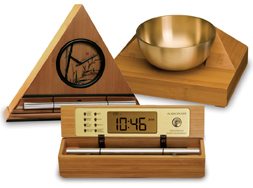 The Zen Timer and Clock Store - Boulder, Colorado Now & Zen – The Zen Timer Store
1638 Pearl Street
Boulder, CO 80302
(800) 779-6383
Posted in Chime Alarm Clocks, yoga, Yoga Timer, Yoga Timers by Now & Zen, zen, Zen Alarm Clock, Zen Clocks and Dream Recall, Zen Timers
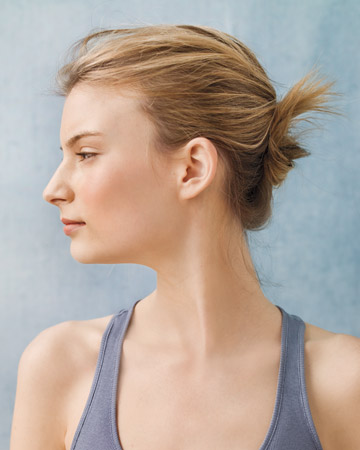 Jaw and Neck Release Stretch The Stress Out
What it does: Releases tension from the jaw, neck, and shoulders; deepens breathing.
How to do it: Sit tall in a chair. Inhale deply; as you exhale, make a “ha” sound, gradually opening your mouth as far as you can without straining your jaw muscles. Let gravity do most of the work. Close your mouth as you inhale and repeat eight to 10 times, opening your mouth wider while using less muscular effort each time.
Now focus on the neck. Still sitting tall, drop your chin toward your chest and take several breaths. Then tilt your head back and look up at the ceiling for several breaths. Bring your head back to the center, inhale, and then turn and look to the right as you exhale. Pause for an inhale, then exhale as you slowly rotate your head to look left. Inhale, then exhale as you rotate your head to the right. Continue until you’ve looked right and left five times each.
adapted from Body + Soul
Use our unique “Zen Clock” which functions as a Yoga Timer. It features a long-resonating acoustic chime that brings your meditation or yoga session to a gradual close, preserving the environment of stillness while also acting as an effective time signal. Our Yoga Timer & Clock can be programmed to chime at the end of the meditation or yoga session or periodically throughout the session as a kind of sonic yantra. The beauty and functionality of the Zen Clock/Timer makes it a meditation tool that can actually help you “make time” for meditation in your life. Bring yourself back to balance.
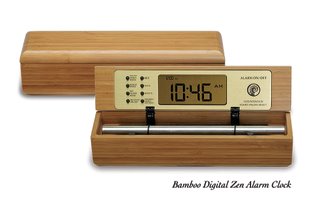 Yoga timers from Boulder, Colorado
Now & Zen – The Yoga Timer Store
1638 Pearl Street
Boulder, CO 80302
(800) 779-6383
Posted in Well-being, yoga, Yoga Timer, Yoga Timers by Now & Zen, Zen Timers
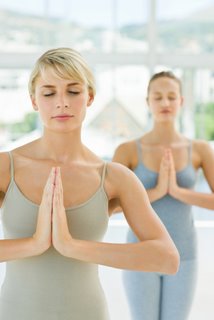 yoga Unless you’re a professional athlete, chances are you’re not getting a balanced workout during your workday. Whether you’re slaving away at a desk, making rounds, or waiting tables, you’re likely straining some muscles while ignoring others, leaving your body feeling stiff, sore, and physically exhausted. Deadlines and pressure from bosses don’t help matters, either.
“When you get stressed, you often hold your breath, which leads to holding your muscles. It feels like you’re wearing a straitjacket,” explains Elaine Petrone, a stress- and pain-management expert and creator of the “Stop the Back Pain” DVD.
You can stretch out the stress, though, with a little time and effort. “By pairing mindful stretches with deep breathing, you’ll make lasting, positive changes to the way your body works, looks, and feels,” says Petrone, who helped us develop this rejuvenating routine. Done for 15 to 20 minutes, three times a week, it paves the way to a calmer, less achy, and more energized you.
adapted from Body + Soul Magazine
Use our unique “Zen Clock” which functions as a Yoga Timer. It features a long-resonating acoustic chime that brings your meditation or yoga session to a gradual close, preserving the environment of stillness while also acting as an effective time signal. Our Yoga Timer & Clock can be programmed to chime at the end of the meditation or yoga session or periodically throughout the session as a kind of sonic yantra. The beauty and functionality of the Zen Clock/Timer makes it a meditation tool that can actually help you “make time” for meditation in your life. Bring yourself back to balance.
 Zen Alarm Clocks and Yoga Timers with Gentle Chime Now & Zen – The Yoga Timer Store
1638 Pearl Street
Boulder, CO 80302
(800) 779-6383
Posted in Bamboo Chime Clocks, Well-being, yoga, Yoga Timer, Yoga Timers by Now & Zen, Zen Timers
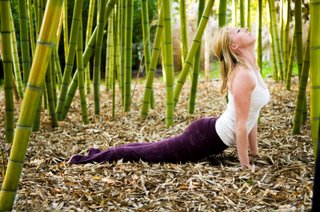 better posture from yoga Your mom was right: You’ll look better and feel great if you stop slouching and stand up straight. Yoga can help you do just that—in a way that honors your spine’s natural curves. Here’s a guide to assessing and improving your posture.
Are you a slumper? A swayer? Chances are you’re one or the other to some degree—despite Mom’s best efforts all those years ago to get you to sit up straight and stop slouching. She probably told you that you’d look and feel better if you worked on your posture, and she was absolutely right. But if you’re like most people, you rolled your eyes and ignored her, or straightened up until she wasn’t looking. And you probably didn’t give posture much more thought at all until you walked into your first yoga class and tried to stand in Tadasana (Mountain Pose).
When you’re a beginner, it’s surprisingly complicated to master the art of rooting down through the feet while lengthening up through the spine, keeping your chest open without jutting your lower ribs out, and keeping the legs muscles strong and lifted without tensing the belly or jaw. But ultimately, Tadasana demands just one simple thing: that you stand in a way that supports the natural curves of a healthy spine. So why is it so difficult? And why do we work so hard to master good posture in yoga—leaving class feeling taller and healthier—only to slump down in the car seat on the way home or revert to a swayback when we heft our overstuffed yoga bags onto our backs?
In short, modern life conspires against good posture. We spend our days sitting at desks, staring at computer screens. When we travel, we do it in cars or—worse—airplanes. We lounge around in overstuffed chairs designed more for looks than for lumbar support. And we pay people to mow our lawns, tend our gardens, and remove our trash so we can spend more time working or driving or sitting. Nonsedentary cultures—with a few exceptions—don’t have the same epidemic of back and neck problems that we do. Picture a woman gracefully balancing a large basket of food on her head. To carry such a heavy weight, she must have a perfectly aligned spine and strong posture-support muscles. You don’t get that kind of alignment and strength from sitting around and watching the tube. You can, however, get it from a regular yoga practice.
Take comfort in knowing that yoga trains your mind as well as your body. As you continue to devote yourself to your practice, you will become more present in your body and more aware of your alignment, and you will begin to naturally make choices that will improve your health and your quality of life. Over time, the combination of increased awareness and physical training will allow your improved alignment to spill out into other areas of your life. Before you know it, you’ll feel at ease as you practice good yoga alignment while you’re perched at your desk, standing at the copier, and sitting at dinner. You’ll be doing yoga during all of your waking hours. And who knows? You might just impress your mom!
adapted fromYoga Journal, by Julie Gudmestad
Use our unique “Zen Clock” which functions as a Yoga Timer. It features a long-resonating acoustic chime that brings your meditation or yoga session to a gradual close, preserving the environment of stillness while also acting as an effective time signal. Our Yoga Timer & Clock can be programmed to chime at the end of the meditation or yoga session or periodically throughout the session as a kind of sonic yantra. The beauty and functionality of the Zen Clock/Timer makes it a meditation tool that can actually help you “make time” for meditation in your life. Bring yourself back to balance.
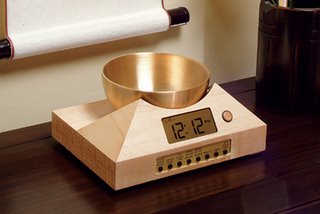 Zen Timepiece, a yoga timer and clock with Tibetan bowl Now & Zen – The Yoga & Meditation Timer Store
1638 Pearl Street
Boulder, CO 80302
(800) 779-6383
Posted in intention, Well-being, yoga, Yoga Timer, Yoga Timers by Now & Zen, Zen Timers
 ume tree (japanese blum) Kaisan-do of Ryodaishi temple Train yourself to reflect before you buy something. Why do you want it? Do you really need it, or are you trying to escape negative emotions? Yoga can help you do without retail therapy, Main says: “The word asana means ‘sit’ … Yoga teaches us to sit with uncomfortable physical sensations, to breathe and relax into them. So when a negative emotion arises, instead of trying to bury it under a new pair of shoes or an iPod or whatever, let it bubble to the surface, look at it, and let it go.” Davis says her yoga practice of 14 years helps her stick to the Compact. “Yoga makes you deal with what’s really going on inside, instead of medicating it through shopping.”
Luhrs says she loves clothes but not as much as she loves the freedom of being debt free. In order to avoid running up credit card bills, she asks herself five questions before buying anything: “Do I have the cash to pay for it? Do I have room in my closet for this outfit? Do I want another outfit? Do I want to care for more clothes? Will I really wear this item a lot? ” You can run through a similar checklist of questions whenever you’re considering buying something new. If it’s an item for the home, Luhrs suggests, “Ask yourself if your eyes need one more thing to look at, or would they rather rest in open space?”
Of course, after reflection, you may decide that you genuinely need something. Before you buy it new, consider alternatives. Can you mend yours? Can you borrow it? Can you buy it used? The obvious places to look for secondhand stuff are thrift stores, garage sales, and secondhand furniture stores. But you can also try craigslist or Freecycle, a network of local groups whose members give each other unwanted items. In San Francisco, Compacters use Building REsources for salvaged architectural material like windows and doorknobs, and SCRAP (Scroungers’ Center for Reusable Art Parts) for low-cost fabric and art supplies. You may be able to find similar resources in your area.
adapted from Yoga Journal, by Helena Echlin
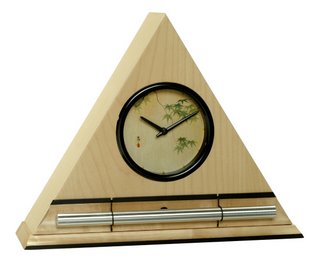 Maple Leaves Dial Face, Zen Alarm Clock with Maple Finish Now & Zen
1638 Pearl Street
Boulder, CO 80302
(800) 779-6383
Posted in intention, wake up alarm clock, Well-being, yoga, Zen Timers
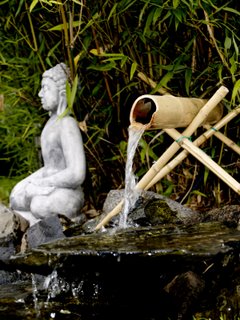 When less is more Make more time for doing the things you love by simplifying your life.
Judy Davis never buys anything new if she can help it. A 58-year-old freelance marketing consultant who lives in Red Bluff, California, she favors thrift store clothing and secondhand furniture. Instead of buying gifts, she gives plants from her garden or bags she has sewn from cut-up vintage gowns. Judy is part of a Bay Area group called the Compact. The Compacters have vowed not to buy anything new for a year except bare essentials: food, medicine, cleaning products, and underwear (although not, of course, lingerie from Paris). Although few people take frugality quite as seriously as the Compacters do, more and more of us are voluntarily cutting back on buying and consumption. Many individuals choosing this lifestyle happen to be yogis. The seminal work of yoga philosophy, Patanjali’s Yoga Sutra, frowns on materialism, and some yogis find that their asana practice alone helps them be happier with less.
The pursuit of the simple life is nothing new, of course. From Quakers to Transcendentalists, America has always had its share of those who associate simplicity with spiritual growth. Back-to-the-land hippies of the ’60s and ’70s found simplicity appealing for more secular reasons, such as ecological sustainability. But those who practice pared-down living today are not necessarily spiritual ascetics or off-the-grid granola types. Most are ordinary people modifying their everyday behavior-trying to be conscious about what they eat, drive, and buy.
In the past 15 years, “voluntary simplicity,” as it is called, has gained thousands of converts. Many books on the subject have been published, such as Janet Luhrs’s The Simple Living Guide, Cecile Andrews’s Circle of Simplicity: Return to the Good Life, and Linda Breen Pierce’s Choosing Simplicity: Real People Finding Peace and Fulfillment in a Complex World. Dozens of websites have sprung up, and nonprofits like Seeds of Simplicity and Simple Living America champion the cause. When the Compacters publicized their manifesto in January 2006, their Yahoo group swelled from about 50 in February to 1,225 in July, with members across America.
Most spiritual traditions encourage simple living, and yoga is no exception. In the Yoga Sutra, Patanjali laid out the yamas (moral restraints) and niyamas (observances), a set of 10 principles that are crucial to one’s progress along the yogic path. One of the yamas is aparigraha, often translated as “greedlessness.” But it means more than just taking only what you need, explains David Frawley, founder and director of the American Institute of Vedic Studies and author of Yoga and the Sacred Fire. Aparigraha also means “not having a lot of unnecessary things around yourself and not hankering after what other people have,” Frawley says. In other words, aparigraha also means keeping only what you need and wanting only what you need.
Aparigraha leads naturally to one of the niyamas: santosha, or “contentment,” being satisfied with the resources at hand and not desiring more. Ultimately, Frawley says, “Yoga is about transcending the desire for external things, which is the cause of suffering, and finding peace and happiness within.”
adapted from Yoga Journal, by Helena Echlin
 Zen Alarm Clocks Now & Zen
1638 Pearl Street
Boulder, CO 80302
(800) 779-6383
Posted in intention, Meditation Timers, Meditation Tools, mindfulness practice, Now & Zen Alarm Clocks, Well-being, zen, Zen Alarm Clock, Zen Timers
 Healing Gems In this relaxing ritual, you’ll gather stones to stimulate the body’s seven main energy centers, or chakras, in the Ayurvedic tradition. While many massage therapists use large stones to massage out tension in muscles, simply placing stones at strategic points on the body can encourage relaxation.
On a sunny day, take a stroll along the beach to gather seven dark-colored, smooth, round stones, preferably 1 or 2 inches in diameter. Set your Zen Timer to 15 minutes. Set them down in a sunny spot and allow them to warm up for 10 to 15 minutes. When you’re ready, lie flat on your back and place a stone on each of the seven chakras (see Vital Energy Centers), one by one. Let your body relax and sink into the ground; feel the weight of each stone and the sensation it creates on your skin. Visualize energy radiating from each chakra through your body, from the top of your head through your toes. Set your Zen Timer for 20 minutes. Relax for about 20 minutes, and then remove the stones.
adapted from Body + Soul, July/August 2006
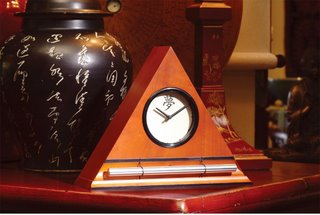 Zen Timers Now & Zen
1638 Pearl Street
Boulder, CO 80302
(800) 779-6383
Posted in intention, Meditation Timers, mindfulness practice, Now & Zen Alarm Clocks, Well-being, Zen Alarm Clock, Zen Timers
 pamper your feet Cold feet are one of winter’s most annoying — and common — afflictions. The answer? A rich blend of warm, wintry spices. Cayenne, cinnamon, and ginger are all circulation boosters and mild stimulants. Applied topically, they increase blood flow, relieving chill and numbness. Cayenne, in particular, has foot-warming benefits; folk wisdom suggests sprinkling the fiery pepper into socks on cold days. For a more luxurious experience, try this simple foot mask. It combines spices, skin-soothing ingredients such as oatmeal and honey, and the invigorating essence of orange.
Orange Spice Foot Mask
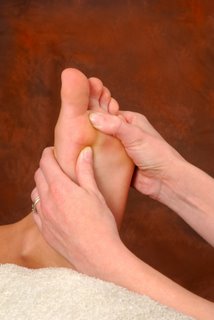 cure cold feet 1/2 cup whole oats
1/2 teaspoon cinnamon
1/2 teaspoon cayenne pepper
4 tablespoons warm water
1 teaspoon olive oil
1 tablespoon honey
1 tablespoon fresh ginger, grated
4 drops sweet orange essential oil
Food Mask How-To
1. Using a food processor, grind the oats to a fine powder. Transfer to a medium-size bowl, add the remaining ingredients, and stir until blended into a thick paste.
2. Prepare two warm, wet washcloths or hand towels, either by wetting them and placing them in the microwave for one to two minutes or by soaking them in hot (not boiling) water. Wring out excess water and set aside.
3. Sitting with your feet in the tub or a large basin, use your hands to spread a thick layer of the mask over each foot, covering them completely up to the ankles. After wiping hands clean, wrap each foot in one of the washcloths to seal in the moisture from the mask. Set your Zen Timer for 15 minutes. Set your Zen Timer with Bowl. Sit back and relax for 10 to 15 minutes.
4. When you’re ready to remove the mask, carefully lift off the washcloths. Rinse your feet thoroughly using warm water. Pat dry with a towel.
adapted from Body + Soul Magazine, Jan/Feb 2006 by Donna Garlough
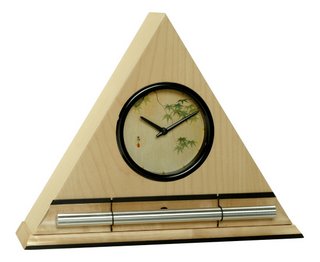 Zen Alarm Clock with Maple Leaves Now & Zen
1638 Pearl Street
Boulder, CO 80302
800) 779-6383
Posted in Chime Alarm Clocks, Well-being, Zen Alarm Clock, Zen Timers
 do it yourself facial Massaging Your Face
This is a great way to loosen muscles scrunched into habitual expressions. “This brings blood to the surface, clears out puffiness, and reduces fatigue in the skin,” says Chris Haas, owner of Ra Organic Spa in Burbank, California. Don’t have time for an appointment? At home, all you need is the following ingredients for a facial serum. Barbara Close, founder of Naturopathica, recommends a base of evening primrose and avocado oils with rose geranium, lavender, and German chamomile essential oils for dry skin, or apricot kernel oil with juniper, lemon, and rosemary oils for oily skin. How? Starting at the chin, move your hands in small circles and continue to the cheeks, around the eyes, and to the forehead. By doing this, you’re stimulating circulation and bringing more nutrients to the skin. Follow with a warm compress to increase the absorption of the serum. Here are some DIY recipes for facial serum, based on your type of skin:
For Dry Skin
Ingredients
1-ounce bottle
1/2 ounce avocado oil
1/2 ounce evening primrose oil
6 drops rose geranium essential oil
3 drops lavender essential oil
2 drops German chamomile
Directions
Fill bottle halfway with avocado oil. Add essential oils, cap bottle, and shake well. Top off with half ounce of evening primrose oil and shake again.
For Oily Skin
Ingredients
1-ounce bottle
1/2 ounce apricot oil
1/2 ounce hazelnut or jojoba oil
6 drops rosemary essential oil
3 drops juniper essential oil
4 drops neroli essential oil
Directions
Fill bottle halfway with apricot oil. Add essential oils, cap bottle, and shake well. Top off with half ounce of hazelnut or jojoba oil and shake again.
For Sensitive Skin
Ingredients
1-ounce bottle
1/2 ounce jojoba oil
1/2 ounce rosehip seed oil
3 drops everlasting essential oil
2 drops German chamomile
6 drops rose geranium essential oil
Directions
Fill bottle halfway with jojoba oil. Add essential oils, cap bottle, and shake well. Top off with half ounce of rosehip seed oil and shake again.
adapted from Body + Soul, October 2010
 Chime Timers and Clocks with Chime in Bamboo, Walnut, Maple, and Black Lacquer Now & Zen
1638 Pearl Street
Boulder, CO 80302
(800) 779-6383
Posted in Chime Alarm Clocks, intention, mindfulness practice, Well-being, Zen Alarm Clock, Zen Timers
« Previous Page — « Previous Entries
Next Entries » — Next Page »
|
|
|
|